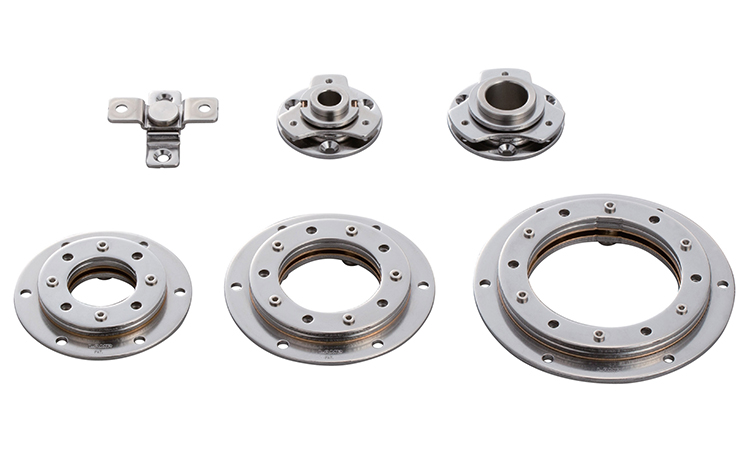Sugatsune introduces Swivel Torque Hinge HG-S for smooth…

Casting & forging industry|new opportunities from manufacturer|growth rate
The recession resulting from the pandemic has led to a devastated economy across the world in 2020. The COVID-19 pandemic affected three primary aspects of the global economy: production, supply chain, and firms along with the financial markets. After the opening up of the lockdown started and manufacturing gradually began picking up, several emerging sectors are throwing up new opportunities, the more than $18 billion Indian foundry or casting industry is looking to double growth rates.
Top industry officials are of the opinion that the sector, which has been reporting a growth of five to seven per cent in the last few years, is expected to witness 13-14 per cent growth in the next couple of years.
Over the years, India has been the world’s third-largest casting producer after China and the U.S. While China accounts for 40 per cent of the world’s 105 million tonnes casting production while the U.S. and India produce between 11 and 12 million tonnes per year.
Ravi Sehgal, an industry veteran who recently organised the 65th edition of the Foundry Congress said, “pan India, the targeted growth rate is 13 to 14 per cent as compared to around five to seven per cent currently. Make in India and other efforts initiated by the government to rejuvenate the economy will play a major role in this.”
The Indian automotive industry, the fourth largest industrial sector in the country, is on the upswing and all global producers are relocating their manufacturing units to this region to be near the upcoming biggest consumer markets. At present, India is the third-largest casting producer in the world. This will further create more opportunities for castings and forging industries both for domestic production and for exports.
Casting and forging are one of the key engineering segments supplying various components to end-user industries such as Railways, Automobile, Defence, Aerospace, Material handling, Construction equipment, and Mines. In this regard, the Indian casting and forging sector is in a good position to generate higher revenues from the auto sector. Major expansion of manufacturing units, by way of organic and inorganic growth, has been playing an important role in this industry.
Industry stakeholders are taking initiatives to acquire technology, knowledge, experience, and expertise in the industry. Meanwhile, the Indian casting and forging industry has upgraded itself to be in sync with international practices. In view of the enormous potential, domestic players have started building up world class capabilities by either putting up greenfield projects or acquiring sick global units and turning them around to set up foreign businesses in India.
According to recent data coming in, the Indian automobile sector is presently moving towards faster growth in the new fiscal year with robust sales across all vehicle categories. Industry body, the Association of Indian Forging Industry (AIFI), recently said that in comparison to the usual trend of low production during the months of April-May, the year 2018-19 saw the industry facing continuous higher demand during the first quarter.
Government of India’s ‘Make in India’ programme aims to raise the contribution of the manufacturing sector to 25 per cent of the Gross Domestic Product by 2025. The Indian Automotive industry commands 22 per cent of India manufacturing GDP and seven per cent of India’s overall GDP. The mammoth shadow of China on the Indian automotive industry should be decreasing in the days to come, as the world’s biggest car market at about 28 million a year, is expected to finally report a slowing down of growth.
Any automotive industry depends significantly on steel-forged metal components. The industry’s products are used for demanding applications such as crankshafts, transmission gears, and bearings, and are essential in handling the torque and stress placed on these components. Stiff competition among key auto industry players is primarily driving the demand for more attractive and lightweight vehicles in the country. Tecnova, the India management consultant hopes that in almost no time, the Indian casting and forging industry is going to be at par with China. Moreover, the forging industry is looking to double its growth rate spurred by imminent demand from emerging sectors, resulting in an increase in the set-up of foreign business in India.
Around two years ago, the industry was passing through a lean phase with many units shutting down due to lack of business. But things have looked up now and an air of optimism prevails.
Though the industry is hit by demonetisation and the effect of GST is yet to come, still, there is a sense of positivity. With the opportunities, India is doubling the growth targets. Fundamentally, the growth should be coming from agriculture, infrastructure, water pipes, wind turbines, automotive, railways, defence and oil and gas sectors, industry players said.
The first two years, i.e. from 2014 to 2016, of the NDA government, the regime could not deliver any major infrastructure project. But now that the government has actually settled in, it is kick starting infrastructure development, said industry players.
Significant amounts of orders are expected to come from the railways sector as more than 2,000 locomotives are to be manufactured in India. New railway lines also provide opportunities to the foundries, said industry executives.
Although the automotive sector, the main stay of the sector, is picking up, the tractor industry is also poised for growth as India had a good harvest this year. The Union government’s decision to provide clean drinking water in every village should also augment business for the sector.
Moreover, organisations in the sector are eyeing a boost I their exports as well. At this point in time, the Indian casting industry caters to only four per cent of the global market. This means that it can scale up the exports way more and do good for the sector. If the country can achieve six to seven per cent, we will be almost doubling the capacity. This actually means there is a huge potential for the Indian companies to drive up revenues.
However, in spite of the opportunities, the industry faces several challenges and these need to be addressed on a priority basis. Primarily, the industry lacks acutely the resources for upgrading its technological status and there is also a dearth of quality or skilled manpower.
Article by Arijit Nag
Arijit Nag is a freelance journalist who writes on various aspects of the economy and current affairs.
Read more article of Arijit Nag









